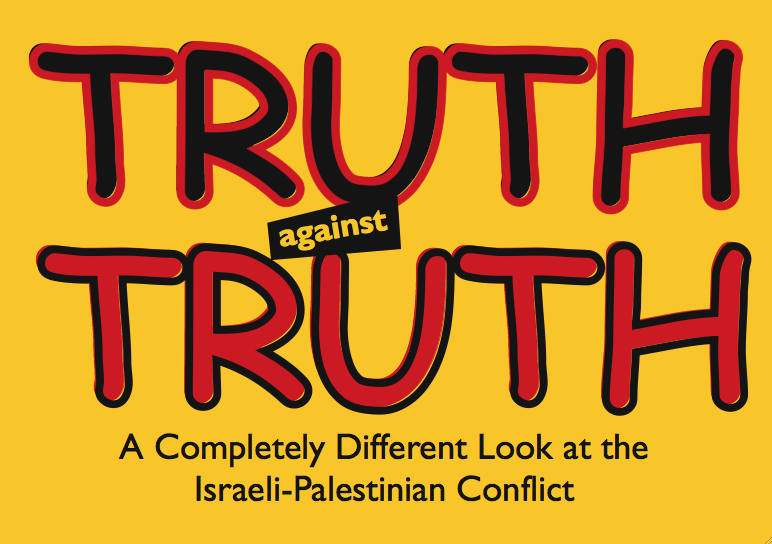Gush Shalom’s Truth Against Truth: A completely different look at the Israeli-Palestinian conflict
This online publication from Gush Shalom, a few years old now, deserves to be more widely known. In 101 paragraphs it gives a basic introduction to and alternative view of the history of the conflict and outlines the basic principles it believes will need to underlie any peace settlement.
Below is its opening statement and its closing two paras 100 and 101. The full text can be downloaded here.
* The Arabs believed that the Jews had been implanted in Palestine by Western Imperialism, in order to subjugate the Arab world.
* The Zionists, on the other hand, were convinced that the Arab resistance to the Zionist enterprise was simply the consequence of the murderous nature of the Arabs and of Islam.
* The Israeli public must recognize that besides all the positive aspects of the Zionist enterprise, a terrible injustice has been inflicted on the Palestinian people.
*This requires a readiness to hear and understand the other side’s position in this historical conflict, in order to bridge the two national experiences and unify them in a joint narrative.
…
<!– @page { margin: 2cm } P { margin-bottom: 0.21cm } –> <!– @page { margin: 2cm } P { margin-bottom: 0.21cm } –>
100.
The new peace camp must formulate a peace plan based on the following principles:
a. The occupation will come to an end. An independent and viable Palestinian State will be established alongside Israel.
b. The Green Line will be the border between the State of Israel and the State of Palestine. Limited exchanges of territory will be possible only by mutual agreement, arrived at in free negotiations, and on the basis of 1:1.
c. All Israeli settlers will be evacuated from the territory of the State of Palestine, and the settlements turned over to returning refugees.
d. The border between the two states will be open to the movement of people and goods, subject to arrangements made by mutual agreement.
e. Jerusalem will be the capital of both States. West Jerusalem will be the capital of Israel and East Jerusalem the capital of Palestine. The State of Palestine will have complete sovereignty over East Jerusalem, including the Haram al-Sharif (Temple Mount). The State of Israel will have complete sovereignty over West Jerusalem, including the Western Wall and the Jewish Quarter. The two states will reach agreement on the unity of the city at the municipal level.
f. Israel will recognize, in principle, the Right of Return of the Palestinian refugees as an inalienable human right, and assume moral responsibility for its part in the creation of the problem. A Committee of Truth and Reconciliation will establish the historic facts in an objective way. The solution of the problem will be achieved by agreement based on just, fair and practical considerations and will include return to the territory of the State of Palestine, return of a limited and agreed number to the territory of Israel, payment of compensation and settlement in other countries.
g. The water resources will be controlled jointly and allocated by agreement, equally and fairly.
h. A security pact between the two States will ensure the security of both and take into consideration the specific security needs of both Israel and Palestine. The agreement will be endorsed by the international community and reinforced by international guarantees.
i. Israel and Palestine will cooperate with other States in the region for the establishment of a regional community, modeled on the European Union.
j. The entire region will be made free from weapons of mass destruction. The signing of the peace agreement and its honest implementation in good faith will lead to the end of the historic conflict and the reconciliation between the two peoples, based on equality, mutual respect and the striving for maximum cooperation.
101. The signing of the peace agreement and its honest implementation in good faith will lead to the end of the historic conflict and the reconciliation between the two peoples, based on equality, mutual respect and the striving for maximum cooperation.

